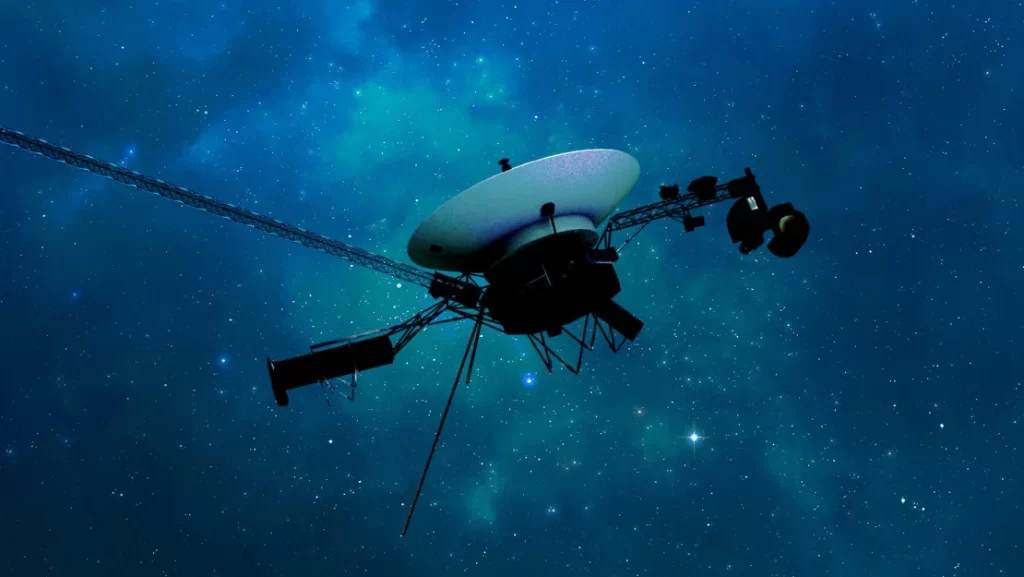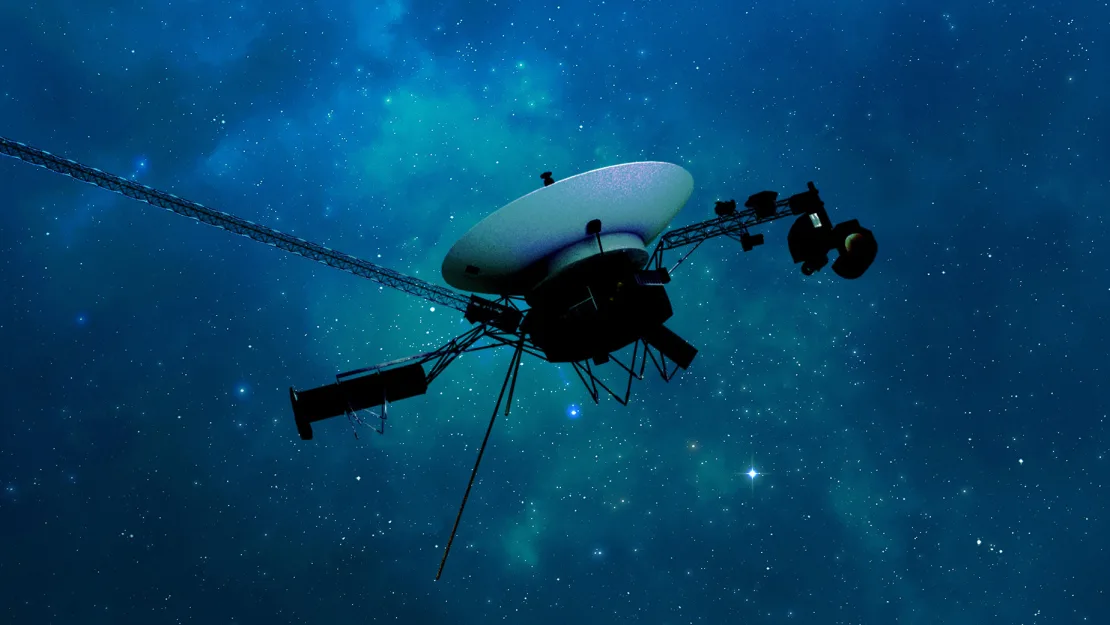
Facing one obstacle after another, the operators of NASA’s Voyager 1 probe continue to find creative solutions to keep the farthest manmade object from Earth transmitting radio communications.
Launched in 1977, it is currently 15 billion miles (24 billion kilometers) from Earth, and is now well beyond the heliosphere, the bubble of particles emitted by the Sun that extends beyond Pluto and out into interstellar space.
Recently, a days-long communication blackout was triggered after a radio command sent by Earth to turn on the probe’s heaters. For some reason, the heating command, which is used to temporarily undo damage sustained by radiation, activated a failsafe that instantly shuts off all non-essential functions to conserve power.
One of those functions was the more high-powered radio transmitter called the X-band, which allows for the probe to send large packages of science data back to Earth. Such messages take 23 hours to arrive, but compared to the S-band, the secondary radio transmitter that uses a different frequency, it’s by far the more powerful.
The S-band hasn’t been used since 1981—there hasn’t really been a need, as it isn’t powerful enough to send back telemetry (flight status and diagnostics) or the data collected by the probe’s monitoring instruments.
“The S-band signal is too weak to use long-term,” said Bruce Waggoner, the Voyager mission assurance manager. “So far, the team has not been able to use it to get telemetry, let alone science data. But it allows us to at least send commands and make sure the spacecraft is still pointed at Earth.”
The engineers at NASA’s Jet Propulsion Laboratory in Pasadena, California, believe that the failsafe reduced the potency of the X-band frequencies, and sure enough, were able to find it faintly among the signals received by the Deep Space Network, a series of satellite dishes that allow NASA to communicate with its autonomous spacecraft all over the solar system.
Then, on October 19th, the X-band signal ended altogether.
The team at JPL doesn’t want to command the probe to turn on the X-band until they’re sure there’s no risk of draining too much power too quickly. Instead, they were able to use the S-band frequency three days later to confirm the probe was still alive, and just conserving power.
If they could get the X-band transmitter working again, it would allow them to receive telemetry data containing information on what happened. As the probe continues to drift further into interstellar space, there’s a very real chance another failsafe event could be triggered, shutting the X-band down again.
MESSAGES FROM EARTH: NASA to Send ‘Message in a Bottle’ Into Space Designed to Communicate With Extraterrestrials
GNN reported that in March 2024, JPL managed to hone in on an issue that was preventing two-way communication with the probe for months.
After diagnosing and fixing this issue by dividing corrupted computer code into short sections and storing them in different places on the probe’s flight data subsystem before ensuring the onboard computer could find them again, JPL once again issued commands to restart sending scientific data on May 19th, 2024.
OTHER NASA PROJECTS TO GET EMOTIONAL ABOUT: The Mars InSight Lander Signs Off on Social Media With Encouragement for Humanity – LOOK
All four instruments were eventually restarted. They gather data on plasma waves, magnetic fields, and particles beyond the solar system.
“We never know for sure what’s going to happen with the Voyagers, but it constantly amazes me when they just keep going,” Suzanne Dodd, Voyager’s project manager, told CNN in April.
SHARE This Latest Mission Update From A Far Away Friend…




















